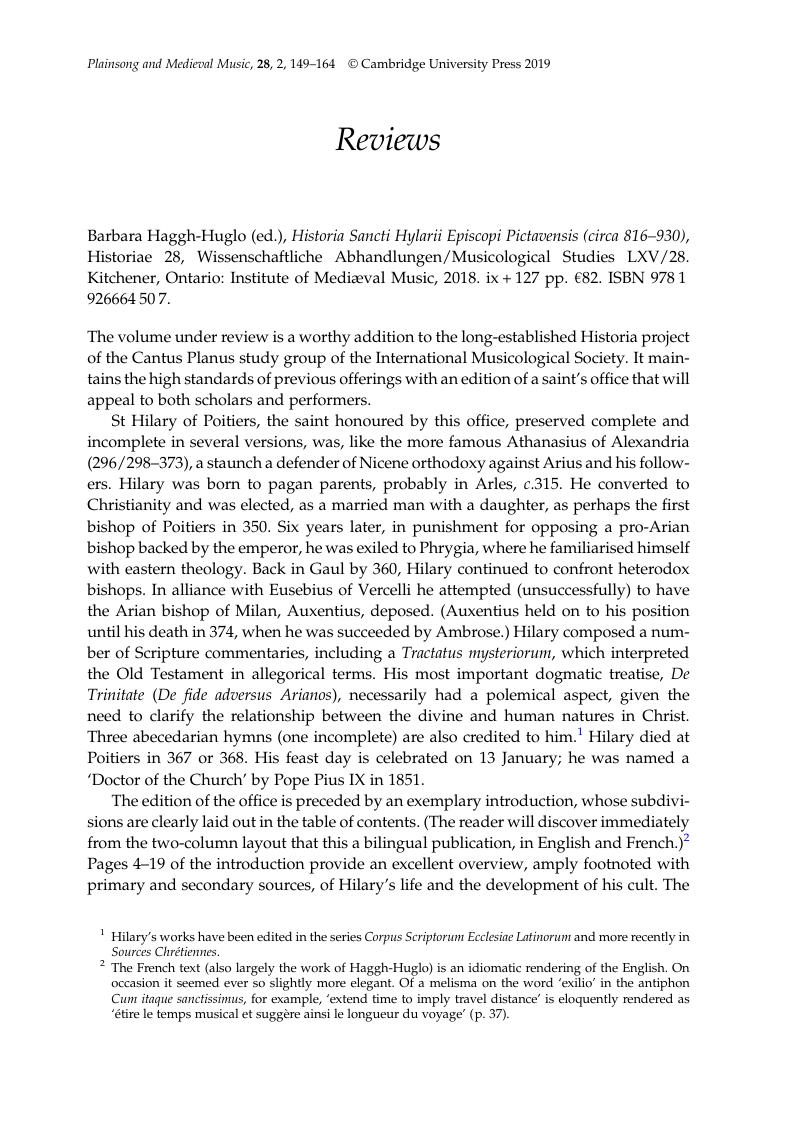No CrossRef data available.
Article contents
Barbara Haggh-Huglo (ed.), Historia Sancti Hylarii Episcopi Pictavensis (circa 816–930), Historiae 28, Wissenschaftliche Abhandlungen/Musicological Studies LXV/28. Kitchener, Ontario: Institute of Mediæval Music, 2018. ix + 127 pp. €82. ISBN 978 1 926664 50 7.
Published online by Cambridge University Press: 11 October 2019
Abstract

- Type
- Reviews
- Information
- Copyright
- Copyright © Cambridge University Press 2019
References
1 Hilary's works have been edited in the series Corpus Scriptorum Ecclesiae Latinorum and more recently in Sources Chrétiennes.
2 The French text (also largely the work of Haggh-Huglo) is an idiomatic rendering of the English. On occasion it seemed ever so slightly more elegant. Of a melisma on the word ‘exilio’ in the antiphon Cum itaque sanctissimus, for example, ‘extend time to imply travel distance’ is eloquently rendered as ‘étire le temps musical et suggère ainsi le longueur du voyage’ (p. 37).
3 The Saintes manuscript is available online (b/w) at gallica.bnf.fr. The high quality of the manuscript may be judged by a colour reproduction of the first page of the office (BNF lat. 16309, fol. 339v) on page 48.
4 Each of the nine lessons of Matins, all derived from the saint's vita, is quite short. Appendix 4 shows how all of the texts of the office relate to the vita.
5 The Saintes manuscript includes music for the Te deum at the end of Matins (pp. 71–3).




